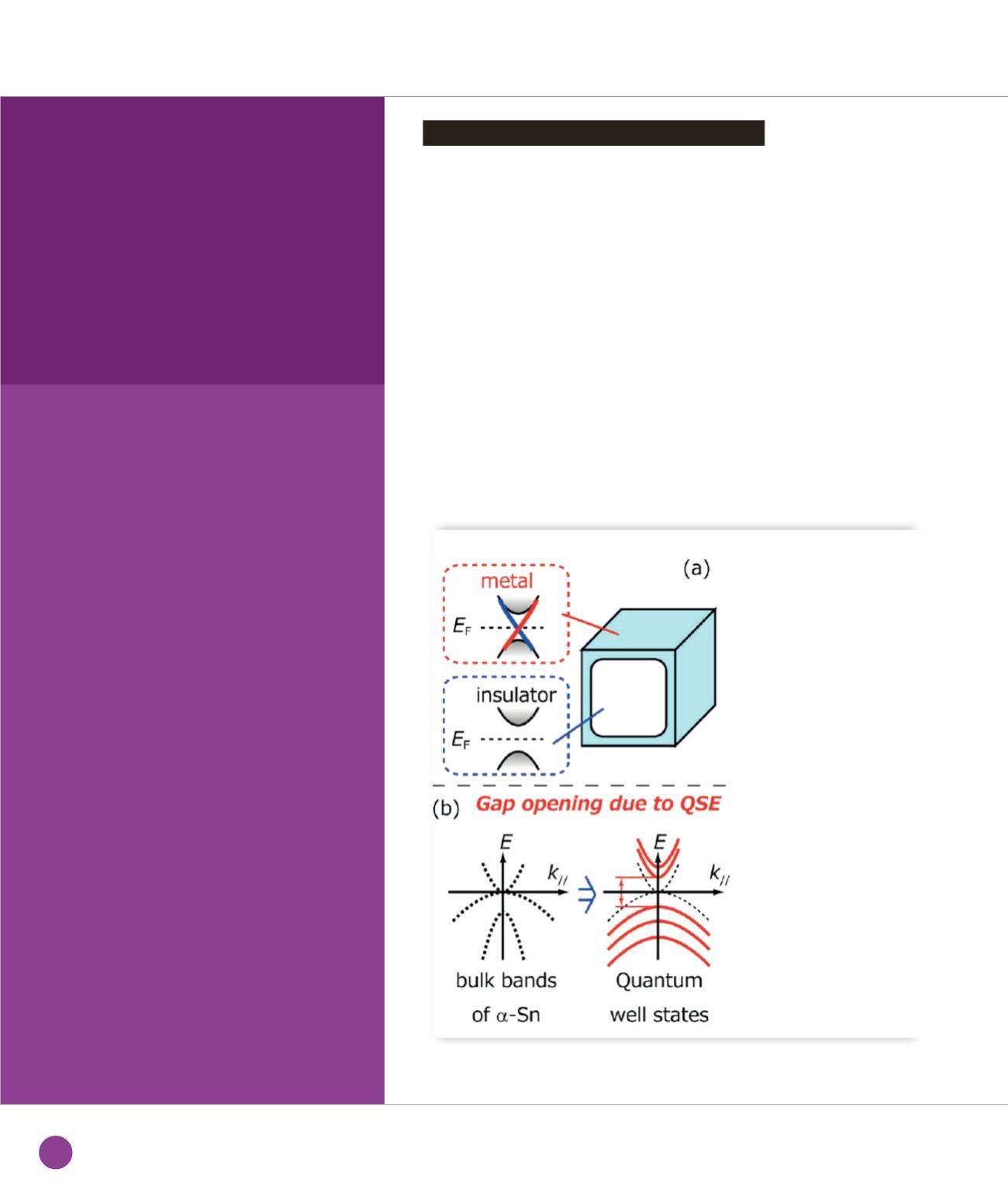
Observation
of topological
electronic states
in
α
-Sn films
We combine angle-resolved photoelectron
spectroscopy (ARPES), spin-resolved ARPES
and ab initio DFT calculations to measure
the spin-polarized surface electronic states
of ultrathin
α
-Sn(001) films. Spin-integrated
and spin-resolved ARPES show clear
massless Dirac-cone dispersion and
helical in-plane spin polarization, indicating
non-trivial topological order of ultrathin
α
-Sn(001). The evolution of spin-polarized
states with film thicknesses provides useful
information that can be used to control
the 3D band gap as well as the 2D gap
and dispersion of spin-polarized states.
This information is of potential importance
for the fabrication of miniaturized spintronics
devices made of ultrathin topological-
insulator films.
Topological insulators (Ti’s) are emerging
as a new state of quantum matter.
While a TI has a finite size bandgap
in its bulk band structure (thus it
is “insulator”), a TI always holds metallic
states on its surface/edge because
of non-trivial parity invariants of its bulk
bands [1]. These topological surface
states (TSS) on a TI are characterized
by spin-polarized massless Dirac-cone
(DC) dispersion and hence TI’s are an
interesting template for spintronics devices
as well as a playground to enhance new
electronic phenomena.
Finite-size effects on TSS are very
important. In particular, quantum-size
effect (QSE) from film thicknesses can
change the electronic structure of TI [2].
Once the electrons are confined in a very
thin thickness, the bulk-band dispersion
perpendicular to the film is no longer
continuous but discrete, forming
quantum-well states (see Figure
➊
).
With QSE, one may control the bulk band
structure to realize a new TI.
Ultrathin films of topological insulators
➊
(a)
A schematic drawing
of 3D topological insulator.
(b)
Expected band-gap opening
due to quantum size effect.
SURFACES, INTERFACES AND NANOSYSTEMS
24
SOLEIL
HIGHLIGHTS
2013


